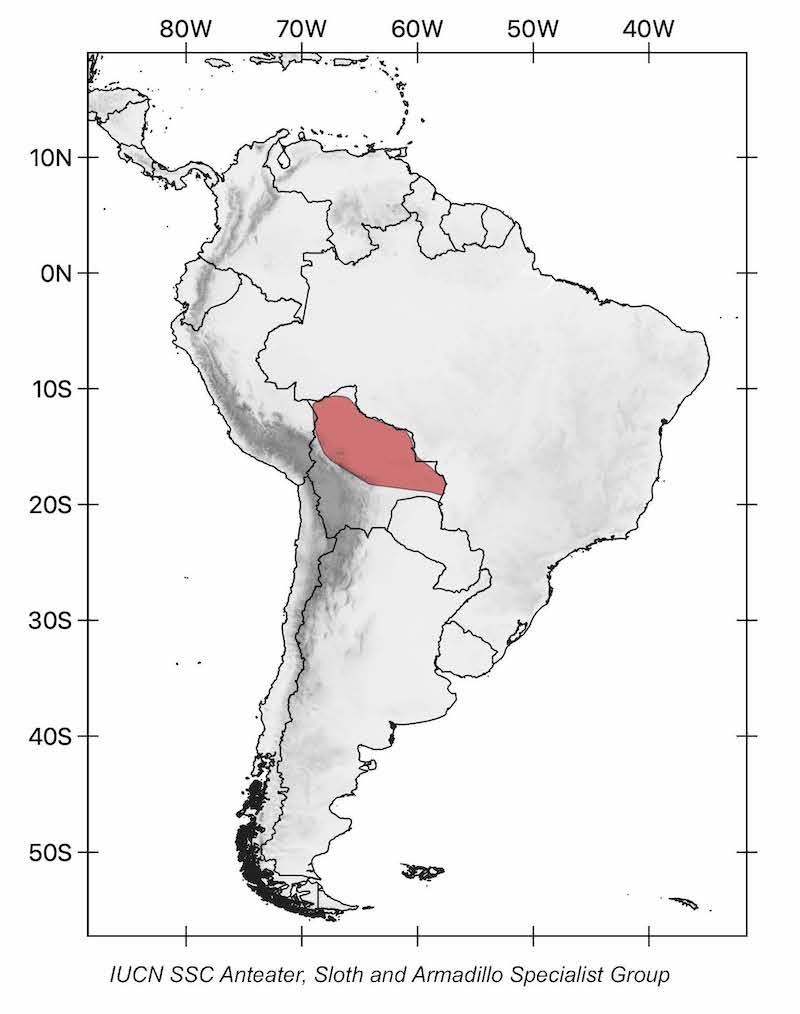Amboro silky anteater
(Cyclopes catellus)
other common names
Amboro pygmy anteater
Taxonomy
Order: Pilosa
Family: Cyclopedidae


description
Until recently, it was thought that there was only a single species of silky anteaters. However, a 10-year long investigation by Miranda et al. (2018) provided evidence that there are actually seven species of Cyclopes.
No specific data are available on the size of Cyclopes catellus, but assuming that it is similar in size to other silky anteaters, it would have a head-body length of around 20 cm, a tail of similar length, and it would weigh around 300 grams. The general color of its fur is brown yellowish; the tail and limbs are more yellowish. There is no dorsal dark stripe, but the ventral stripe is strongly developed and extensive. Its fur is denser than that of the other Cyclopes species.

range
The Amboro silky anteater has the southernmost distribution of all Cyclopes species. It is only known from central Bolivia, but due to the lack of field studies its exact range is unknown. Unconfirmed photographic records suggest that the red silky anteater (C. rufus) and Thomas’ silky anteater (C. thomasi) may both be present in the north of Bolivia. If so, the range of C. catellus might be smaller than currently thought.

HaBITAT and ECOLOGy
The Amboro silky anteater occurs in Andean slopes forests, low forests and yungas. It has been observed moving and feeding in vine tangles. It is solitary, arboreal and nocturnal.

diet
No information is available on the diet of this species, but it is presumably an opportunistic insectivore that mainly feeds on ants.

reproduction
Gestation length of the genus Cyclopes is 120–150 days.

threats
The species is most likely affected by habitat loss. In Bolivia, between 2018 to 2022, frequent wildfires – considered a major threat to wildlife – have been transforming forests and grasslands to agroindustry areas for soy beans. Indigenous people consider silky anteaters as a magical species that brings bad luck to those that encounters it in the forest, leading to persecution and hunting.

Population trend
Decreasing.

conservation status
The extinction risk of this species has not been formally assessed since the new taxonomic classification. Hence, it should be considered Not Evaluated.